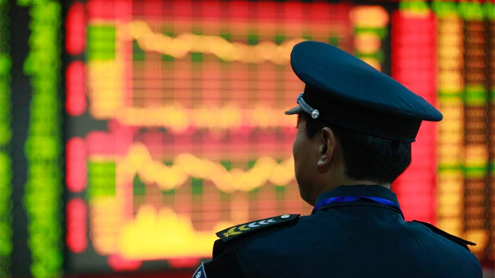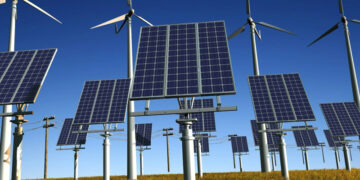
Earlier this month the US National Intelligence Council released its Global Trends 2030.Alternative Worlds report — a document that comes out once per presidential administration — mapping out likely geopolitical trends over the next two decades or so.
As usual, it’s a must-read, offering comprehensive analysis of the disparate factors that will drive global politics through 2030.This time around the NIC sets an increasingly “multi-polar world” as the backdrop of its report, acknowledging that the lack of global leadership has accelerated in the wake of the global financial crisis of 2008-09. America’s status as a “hegemonic power” is eroding, and no country is likely to take its place.
This multipolar world is the foundation for the rest of the NIC’s predictions. The report is organized around subsections that range in probability: There are the mega trends that are sure to have an effect, the game-changers that could go a number of ways, and the four potential worlds of 2030.In my opinion, when it comes to probabilities for the future global order, the single biggest variable — both in terms of its importance and its potential variance — is China’s rise or lack thereof. If there are twin “gigatrends” that supersede all else, they are China’s trajectory and the multipolar world in which it is playing out.
China is mentioned more than 300 times in the report, and the NIC’s assertion that “the US-China relationship is perhaps the most important bilateral tie shaping the future” is dead on (though I’d cut the word “perhaps”). But despite China’s implicit impact on the report, the NIC doesn’t establish it as the twin pillar alongside the multipolar world it vividly describes. Nor do we get a full sense of how a host of negative China surprises could fundamentally alter the world of 2030 as we imagine it. A look at each subsection of the NIC report demonstrates just how critical China’s development is — or should be — in its calculus.
Individual empowerment: Reduced poverty, growing middle classes and new communications and technologies will empower individuals around the world. Individual empowerment is, on balance, a positive global trend. But in China, it is moving along two tracks. There is the increasingly affluent, coastal, urban China, where citizens have access to the Internet and increasingly demand the protections that come with the rule of law, respect for intellectual property rights and tougher environmental standards from their government.
On the other hand, there is the half of China that is rural, mainly inland, impoverished and uninformed. Should this group fall further behind, China might face unrest and volatility from the other side of the spectrum. China’s two-speed individual empowerment is a more destabilizing dynamic than it may appear.Diffusion of Power: Without a hegemon, power will shift to “coalitions in a multipolar world.” This is spot on. But if power is shifting away from the United States and its allies, where is the bulk of it shifting to? According to the NIC report, China will provide one-third of global growth by 2025, even if its growth rate should slow considerably. As the United States scales back its role on the global stage, the needs of China’s economy are tying its leaders ever more tightly to the world’s conflict zones.
Demographic patterns: We’ll see more aging, urbanization and migration.China is ground zero for all three of these critical demographic trends and the interplay between them. According to some studies, the ratio of Chinese workers per retiree could drop from 8 to 1 today to 2 to 1 by 2040. That’s a product of a rapidly aging population — and a one-child policy that will keep the labor force from growing fast enough to keep pace. With “two Chinas,” one urban and empowered, the other impoverished and rural, urbanization and migration will cause significant turbulence in China’s social and economic fabric.
Food, water, energy nexus: For the most part, demand from the developing world — mainly China and India — for these resources will drive conflict surrounding them. Today, China and India are home to 37 percent of the world’s population — and just 10.8 percent of its fresh water. Their share of the population will grow — as will demand for water as their middle classes grow.Food is a similar story. Consider meat, which is particularly grain-intensive (and so requires a lot of water). In 1978, China’s overall meat consumption was one-third that of the United States’; today, it’s double. China now eats one-quarter of the global supply of meat, or 71 million tons a year. But per capita, it still only consumes one-quarter as much meat as the United States. Expect the gap to close — with dramatic ramifications for global food supplies — as China’s middle class grows through 2030.
Crisis-prone global economy, governance gap, potential for increased conflict: Will multipolarity lead to a collapse or a greater resilience in the global economy? Will a governance gap between countries’ leadership capacities and changing realities overwhelm governments? Will we see more conflict? Whether a multipolar world makes the global economy more or less volatile will increasingly depend on China’s trajectory and the role it chooses to play on the global stage. In terms of the governance gap in China, the NIC notes that there is a chance that demand for democratization will vastly outstrip Beijing’s progress in that direction.
Unfortunately, in the case of sweeping democratic change, I just cannot get past that word “collapse.” Think about the Soviet Union in 1991. Then remember that China is on pace to become the world’s largest economy. In other words, there is a wide range of possible events in China that would have a starkly different — and enormous — impact on what the world looks like in 2030.The NIC aptly explains the regional dynamic: “Regional trends will pull countries in two directions: toward China economically but toward the US and each other for security.” As China grows, this balancing act will become unsustainable.
And with such an outsized percentage of global growth slated to come from East Asia, this region’s issues are the world’s issues. I don’t mean to give prospects for Middle Eastern and South Asian instability short shrift — they will have their fair share and more. But China and its neighbors are at the center of this trend.Can the advent of new technologies help address global challenges like population growth and climate change? Technological innovation is a global positive, but its potential to negatively impact China is a substantial piece of the puzzle.
Let’s focus first on social media and innovation in information and technology. Any trend that scrambles the status quo of public perception and could potentially pierce the Politburo’s opacity has the potential to be structurally destabilizing. An estimated 570 million Chinese are on the Internet, and approximately 100,000 log in for the first time each day. Can the government keep pace with the lightning speed of technological innovation? What happens if it can’t? Another field of cutting-edge technology between now and 2030 will be in 3-D printing for manufacturing and robotics.
As the NIC explains, these technologies could eliminate low- and middle-wage jobs in developed countries, as has already happened with outsourcing. But what of their impact on a developing nation such as China? A similar “outsourcing” from human labor to a machine equivalent could be hugely disruptive. Machine-driven economic growth could exacerbate the dichotomy between the poor rural China and the rich urban one. What happens when China’s most valuable resource — ample cheap labor — becomes the most serious threat to central political control?The report correctly depicts the role of the United States as a game-changer, but China could use a parallel section.












